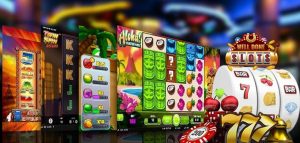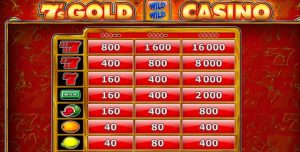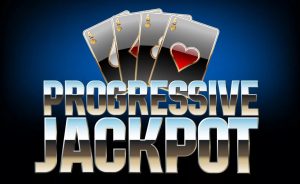There are 2 things that Australians love dearly. Gambling and word shortening. We all know how cute their “surfies”, “rellies” and “mozzies” are. So, here’s what happened when a poker machine met an Aussie: it became a “pokie” adding another item to the gamblers’ vast slang collection.
So, a pokie is not any different from a slot machine except for the name. Australians and New Zealanders use the term “pokies” while all the rest of the world prefers “slots”, be it at an online casino or at a traditional bricks-and-mortar venue.
We’re going to go through the most popular terms and meanings to help a beginner navigate in the world of online gambling more smoothly.

Pokies (slot machines, pokie machines, puggy, electronic gaming machines, EGMs, also known as a fruit machine or fruitie in the UK and his highness One-armed Bandit from way back). This term does have a lot of synonyms, and we are sure everyone has seen it at least once and has some kind of an understanding of what it is.
A gambling mechanism that operates with the help of a lever that players pull or a button that they push to activate 3, 5, or 6 vertical reels. The objective is to get a specific horizontal combination assigned by the rules out of symbols distributed on the reels. The symbol patterns are unpredictable as they come out randomly. Now the device has its virtual copy and has successfully integrated into online reality.
Scatter (scatter symbol) is one of the symbols on the reels of a pokie that can grant players extra rewards. This symbol is beneficial regardless of its position. What bonuses will it give out and what kind of symbol it is will depend on the game and the software developer. So, don’t forget to familiarize yourself with all the rules and details before you start playing and wager real money.
Wild (wild symbol) is one of the most desirable symbols on a pokie reel as it can replace any regular symbol in order to form a winning combination.

So, pokie symbols come out randomly creating horizontal, vertical and diagonal lines. The number of possible lines can exceed hundreds, but there are just a few of them that matter. Paylines.
Payline is a line formed by a winning combination that usually consists of identical characters (symbols). Depending on a pokie, a payline is not necessarily a horizontal line, it can be a pattern like a zigzag or a diagonal, for instance.
The more paylines you are playing with (that is, in fact, the number of lines you’ve bet on or activated), the higher your chances to win are. The number of activated paylines corresponds with the size of your wager. The higher you pay, the more paylines are active and can bring you the winning combinations. If a winning combo lines up on the payline that you haven’t bet on, unfortunately, that payline is not giving you anything.
Winning combinations (payout combinations) is exactly what all of us are here for. It’s a certain number of identical symbols that have to form up a line on a slot machine. If players hit this combination on a payline, they get a pay-out.

A table or a board that contains all the rules and the most important information about a game you’re about to play. This is where you can find everything you need to know about winning combinations, a number of paylines, special symbols and their features, pay-out conditions, minimum and maximum bets, wagering requirements, and so on. We hope we’ve said enough for you to understand that a paytable is the first thing to check out before starting to play and risking real money.
A wager, generally speaking, is your bet or stake. The money you are ready to risk on one move, be it a reel spin, a sports match, or a card game in order to win.
You are going to come across this term when you are dealing with different kinds of casino bonuses. If you get bonus credits upon registration or as a part of a special promotion, they are most likely to come with wagering requirements. You can not just withdraw the bonus “money” that a casino has kindly given you. You will have to use them up right there, at the casino.
A wagering requirement is a condition established by an online casino that tells you how many times you have to wager (bet) the bonus credits before you may withdraw your winnings.
For example, a new player gets $10 bonus credits upon registration. The welcome bonus states that the wagering requirement equals 20x. It means that the player has to use up all these $10 bonus credits and make 20 wagers. So, $10×20=$200. After the player has wagered these $200, they may withdraw any winnings.

To put it simply, a progressive jackpot differs from a regular one by its pool size.
A progressive jackpot is a payout that can be won randomly after any spin. As long as nobody is hitting the right combination the jackpot stands still and keeps on growing. The size of the jackpot increases because any bet made on this slot contributes to it with some per cent.
Normally a progressive game “X” developed by the same provider “Y” but played at different online casinos has the common progressive jackpot pool. So, hundreds of people playing the same pokie at hundreds of online casinos are building up the progressive jackpot together for one lucky duck. And anyone can hit it anytime.
A slot machine is not going to pay out all the money the players have wagered, otherwise, casinos wouldn’t be a profitable business. But there’s a part of all the wagers the machines have to pay back. The law regulating gambling venues at different places establishes the minimum Return to Player rate, so it varies from 74% to 99%.
The algorithm determining how much to pay and when is programmed by the software developer and is usually calculated over a sufficient period of time – 1,000,000 spins and more.
Let’s look at an example.
If a pokie has an RTP of 90% and every spin on this slot costs $1, after all the players have made a million spins and paid $1,000,000 to the casino, the casino in return is going to pay back the total of $90,000 to random players and keep $10,000 as their profit.
Keep in mind that it’s just a simplified example with rather rough numbers; we just wanted to give you an idea.